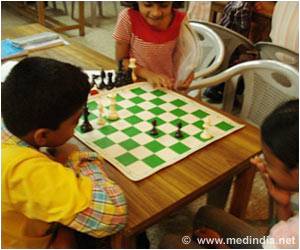Offering reading materials with wider spacing between the letters can assist dyslexic children to read faster and better, said European researchers said on Monday.

Scientists believe the approach worked because people with dyslexia are more affected than normal readers by a phenomenon known as "crowding," which makes a letter harder to identify when it is close to other letters.
"Our findings offer a practical way to ameliorate dyslexics' reading achievement without any training," said the study led by Marco Zorzi of the department of general psychology at Italy's University of Padova.
Researchers studied 54 Italian and 40 French dyslexic children, giving them a text made up of 24 short sentences to read in either standard or expanded letter spacing.
In the standard text, the words were printed in Times-Roman font with a 14 point print size (1 point = 0.353 mm in typesetting standards).
In the expanded text, the space between letter was increased by 2.5 points, so the "space between i and l in the Italian word il (the) was 2.7 pt in normal text vs. 5.2 pt in spaced text," said the study.
Advertisement
The children were given either French or Italian texts according to their native language, and the regular and extra-space sessions were scheduled two weeks apart to minimize the effect that memorization might have on reading speed.
Advertisement
Children without reading challenges showed no increase in reading speed when given materials in which letters were more widely spaced, suggesting that the benefit was unique to children with dyslexia.
"Practitioners only know too well that getting dyslexic children to read more is a key component in achieving long-lasting improvements in reading skills," said the study.
"Extra large letter spacing, which could even be optimized adaptively on an individual basis, can certainly contribute to achieving this goal."
Dyslexia is a developmental disorder that is linked to a problem in the part of the brain that interprets language, and can run in families. Extra tutoring and an intense focus on reading are the most frequently advocated treatments.
The disorder, which has no cure, is estimated to affect about 15 percent of Americans.
Co-authors on the study came from Aix-Marseille University and France's Centre National de la Recherche Scientifique.
The research was funded by grants from the Institute for Maternal and Child Health in Italy, the European Research Council Grant and the University of Padova.
Source-AFP









